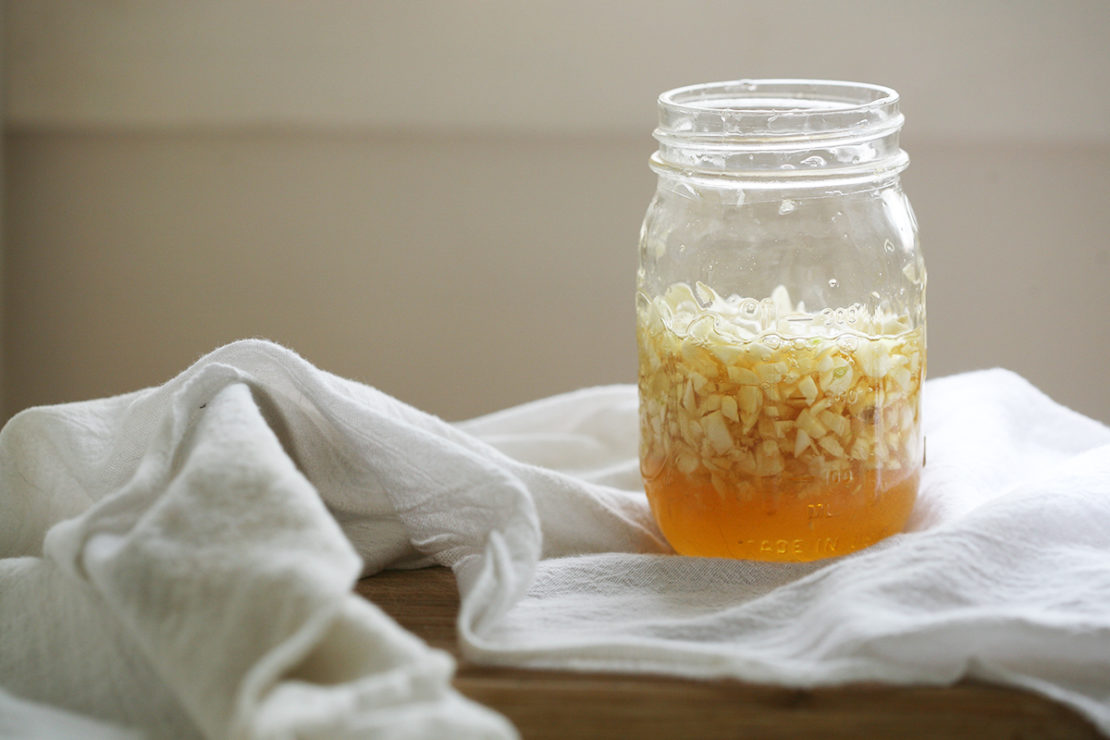
DIY Garlic Honey for Cold & Flu Season Preparation
We all know cold and flu season is coming when the temperature begins to steadily decrease and we start to hear sniffly noses, scratchy throats, and coughing all around us.
Cold and flu season can come on rather quickly, affecting significant portions of the community at once. However, this time of year tends to be unfortunately rhythmic and predictable. When one person begins feeling unwell, you know that more cases are likely on the way.
So what can you do to support yourself and prepare for the cold and flu season ahead?
While it’s easy to feel defenseless against unseen viruses and bacteria, there is much you can do to prepare for cold and flu season. Giving your body extra support against illness through the use of gentle and effective herbs is one of the very best ways to prepare yourself for this time.
One such plant that is a wonderful herbal ally during cold and flu season is garlic!
In this post, we’ll discuss the benefits of garlic during cold and flu season and then share an effective recipe for DIY garlic honey with you to help you be better prepared for the season ahead.
Benefits of Garlic During Cold and Flu Season
Garlic has been used for at least 5,000 years as a food and an herb. Numerous scientific studies support its positive effects on various body systems, particularly for common ailments. In fact, garlic is one of the most well-researched herbs to date, and it provides excellent support during the first stages of a cold or the flu!
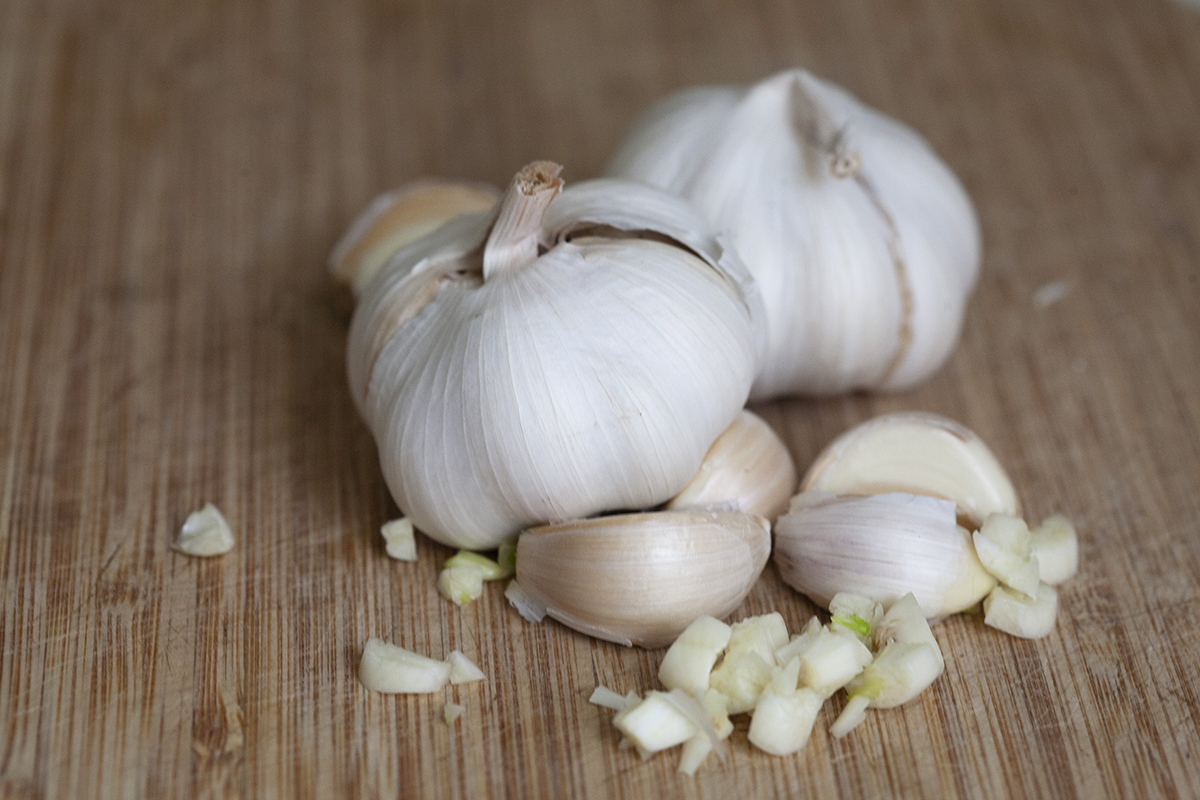
Actions and Energetics of Garlic
Garlic is a warming herb with many beneficial properties, such as its anti-inflammatory, antimicrobial, expectorant, and immune stimulant actions (among others), which make it a perfect herbal ally during cold and flu season.
It is used as an antimicrobial for infections caused by viruses, bacteria, protozoa, worms, yeast, and fungi, and it has 18 known antiviral and antibacterial constituents (Gladstar, 1993).
One of the most effective ways to use garlic during cold and flu season is to eat raw cloves, which are used to support the body’s response to respiratory infections in the winter months. Garlic can ease some of the discomforts of a cold through its anti-inflammatory action, as well as shorten its duration by stimulating the immune system, thinning mucus, and resolving a fever.
How To Prepare Garlic
To use raw garlic to its greatest potential, you can chop or crush the garlic and let it sit and oxidize for 3-5 minutes before taking it internally or adding it to a meal. This process helps to release the sulfur-rich compounds in the cloves which are activated by oxygen and an enzyme that converts the amino acid alliin to allicin and other isothiocyanates; it’s these protective compounds that hold the true power of garlic (Masé, 2013). Another important point to remember when it comes to using garlic is that heat deactivates this process, so allowing the clove to sit for a bit before cooking will allow you to get the most beneficial bang for your buck.
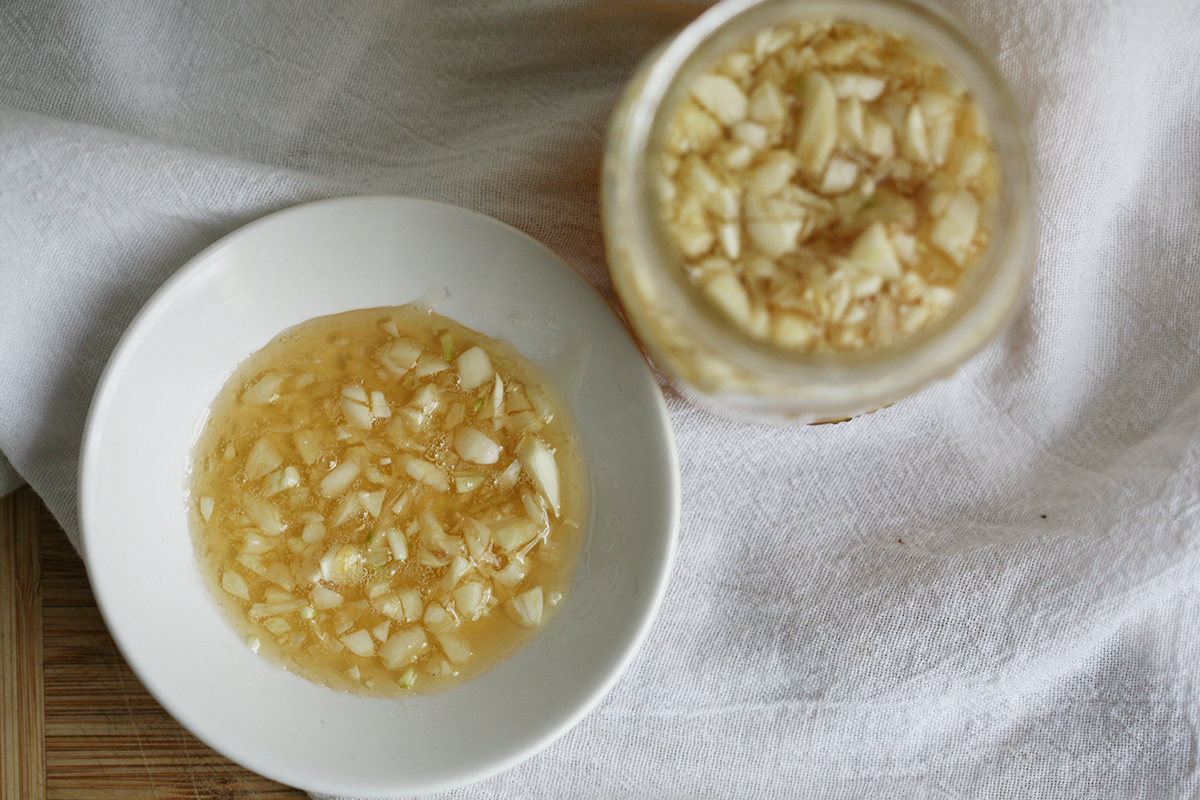
While you may be hesitant to use garlic due to its odor, smelling of garlic is one way to know you have taken enough—allowing the garlic to have a systemic effect on the body, reaching beyond the GI tract. Volatile oils in garlic are thought to be excreted in part by respiration, which may be part of how it delivers benefits to the respiratory tract (Hoffmann, 2003).
Cautions When Using Garlic
Garlic isn’t recommended for those with gastrointestinal sensitivities or ulcers as it can aggravate these conditions. Large amounts of garlic can thin the blood so use only in culinary amounts if you are on blood thinners or pregnant, in the postpartum period, or breastfeeding. It is also recommended that you avoid intentional garlic consumption beyond common food uses for 2 weeks before and after surgical procedures (Mills & Bone, 2005).
Now that you know why garlic is a great herbal ally for cold and flu season, let’s look at one very effective way to actually put garlic to use by incorporating the following DIY Garlic Honey recipe into your daily regimen during cold and flu season.
DIY Garlic Honey
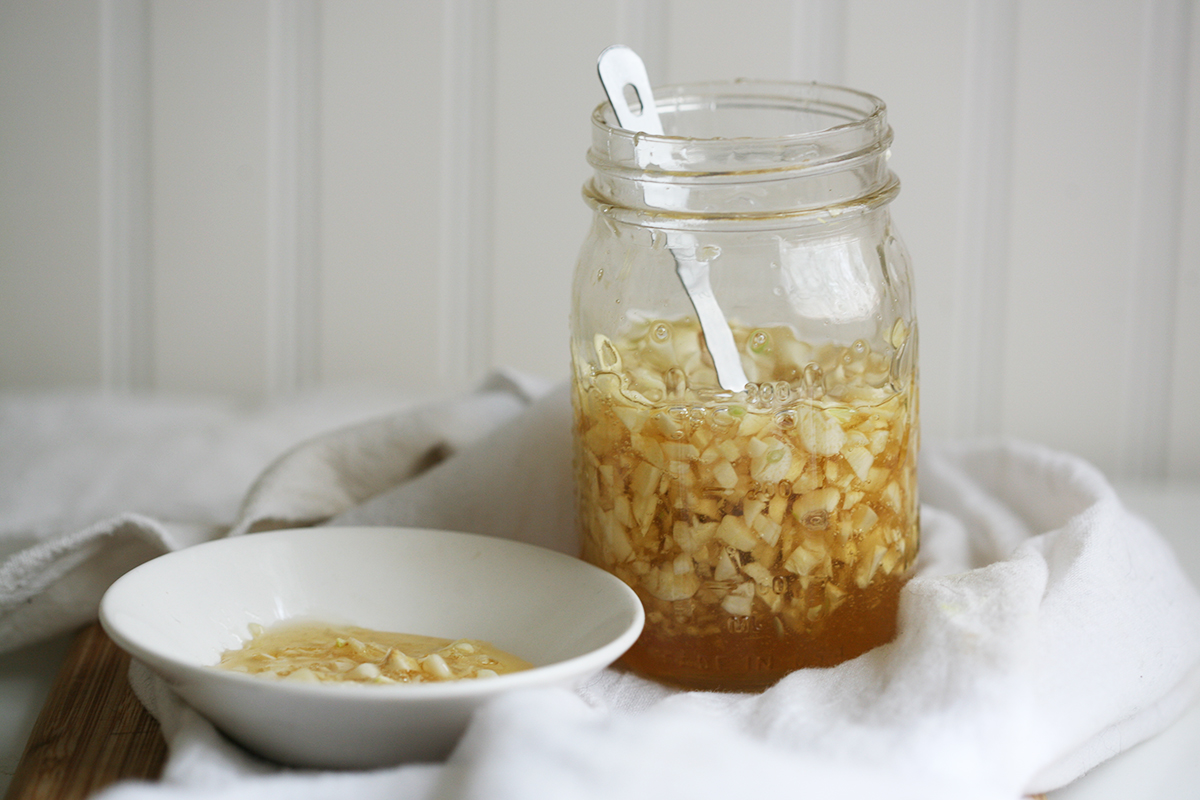
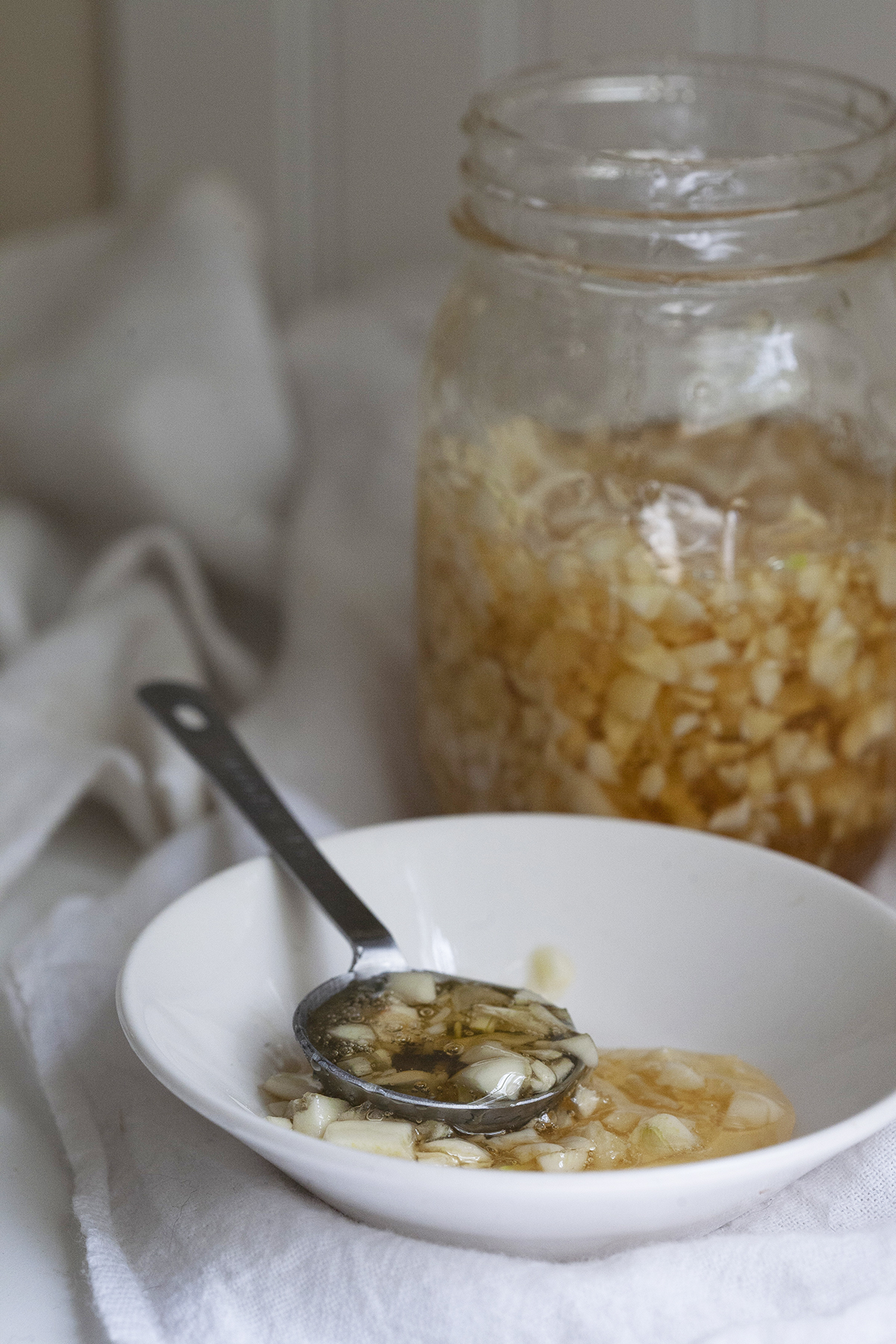
Garlic Honey
Garlic is an antimicrobial used for thousands of years in many cultures to fight infection. In this simple recipe, we will combine garlic with honey, another antimicrobial superfood. Garlic honey and the honey-steeped garlic cloves can be taken on a regular basis as a heart tonic or to stave off infection. They can also be taken at the first sign of illness or to soothe a sore throat, cough, cold, the flu, or sinus infection. Try garlic honey stirred into a hot cup of tea or eaten by the spoonful!
3 garlic (Allium sativum) bulbs
Raw honey
- Peel and separate the cloves and chop or grate.
- Fill a sterilized, dry jar about half full with chopped garlic cloves, then cover with honey. (Avoid filling to the top of the jar as a harmful bacteria is more likely to grow if there is no air space at the top of the jar. See the food safety note below.)
- Poke through the honey with a sterilized, dry spoon to make sure that all of the garlic is covered.
- Cap and label the jar, and store for up to 3 months.
- To use, take 1 teaspoon once a day as a tonic or 4-6 times a day during an active infection.
Note: Honey and garlic can both harbor spores of Clostridium botulinum (the pathogen that causes botulism). The growth of C. botulinum spores is more likely to occur in a neutral pH, a moist environment, or an environment without oxygen. C. botulinum spores are less likely to reproduce and the risk of botulism is lower in preparations with high acid (pH of below 4.6), high sugar, or high salt content (United States Department of Agriculture Food Safety and Inspection Service, 2010). Honey is approximately 80% sugar, making it high in sugar. Honey is also acidic, with a pH of 3.9 (National Honey Board, n.d.). Though many use this recipe as-is, because the honey is diluted by the garlic thus causing the sugar content to lower, some individuals choose to use a pH meter and add a splash of apple cider vinegar to keep the pH levels below 4.6.
Be Prepared for Cold & Flu Season!
Learn even more about using herbs to support the body this season with our FREE ebook, Herbal Support for Cold & Flu Season!
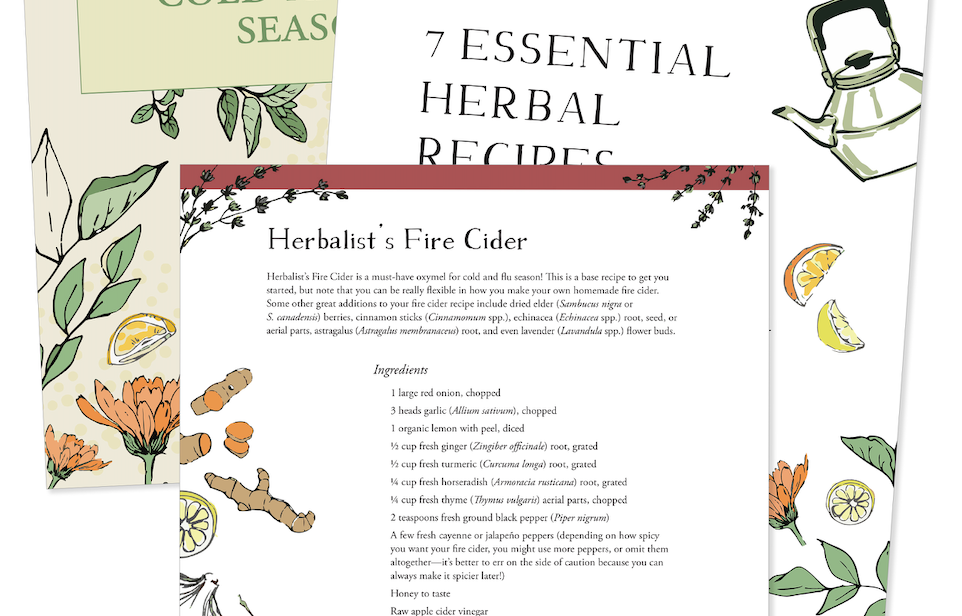
Not only will you learn about healthy lifestyle changes that can help keep colds and the flu at bay, but you’ll also learn about 6 must-have herbal allies for the season as well. We’ll also share 7 of our favorite cold and flu season herbal recipes—many that use the aforementioned herbal allies. These recipes can help stimulate your immune system, support your body in recovery from viral illnesses quickly, ease spasm-like coughs, and cool hot bodies when fevers are present.
Get your free ebook and prepare for cold and flu season right here!
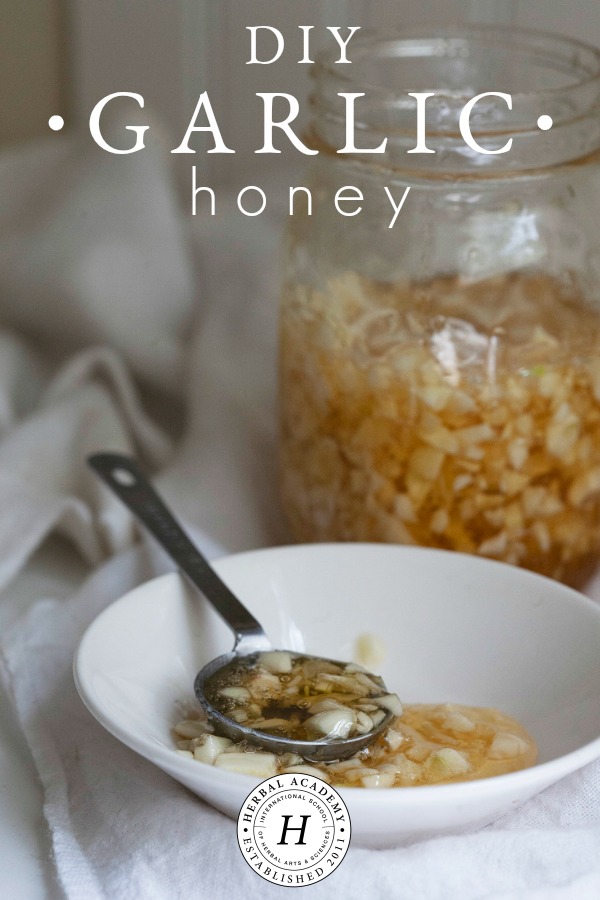
REFERENCES
Gladstar, R. (1993). Herbal healing for women. New York, NY: Simon & Schuster.
Hoffmann, D. (2003). Medical herbalism: The science principles and practices of herbal medicine. Rochester, VT: Healing Arts Press.
Masé, G. (2013). The wild medicine solution: Healing with aromatic, bitter and tonic plants. Rochester, VT: Healing Arts Press.
Mills, S., & Bone, K. (2005). The essential guide to herbal safety. St. Louis, MO: Elsevier Inc.
National Honey Board. (n.d.). pH and acids in honeys. Retrieved from https://www.bjcp.org/mead/ph_acid.pdf
United States Department of Agriculture Food Safety and Inspection Service. (2010). Clostridium botulinum. Retrieved from https://www.fsis.usda.gov/wps/wcm/connect/a70a5447-9490-4855-af0d-e617ea6b5e46/Clostridium_botulinum.pdf?MOD=AJPERES







